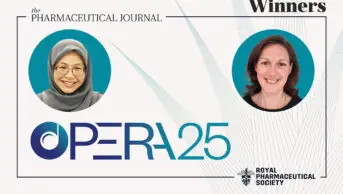Around 15–20% of breast cancers show amplification (increased number of gene copies) or overexpression (increased production of protein) of the human epidermal growth factor receptor 2 (HER2). These patients have highly proliferative tumours and decreased expression of oestrogen and progesterone receptors, alongside positive axillary lymph nodes (to which cancer has spread). These patients are at high risk of cancer recurrence and death.
Trastuzumab (Herceptin®, Roche) — a recombinant monoclonal antibody that inhibits HER2 protein — is the first biological (targeted) drug approved for HER2-positive breast cancer. In 2006, the National Institute for Health and Care Excellence granted approval for use of trastuzumab in the adjuvant setting (after surgery) at a significant financial cost[1]
. Treatment with trastuzumab in patients with advanced breast cancer is reported to cost £15,834.60[2]
, and could extend life by five months. In the United States, a one-year treatment of trastuzumab costs around US$55,000, based on Medicare estimates.
Meta-analysis of landmark trials (HERA[3]
, BCIRG 006[4]
, NSABP B-31[5]
, and Intergroup N9831[5]
) demonstrates a consistent improvement in disease-free survival (DFS) and overall survival when using trastuzumab for one year following adjuvant chemotherapy[6]
. Trastuzumab, alone or in combination with chemotherapy, is used in the treatment of early breast cancer; however, it is often used in combination with chemotherapy in advanced breast cancer. But serious cardiotoxicity and resistance present a concern. Women with pre-existing heart conditions, poorly controlled high blood pressure, and women who are pregnant or breastfeeding are cautioned not to take trastuzumab.
The phase III PERSEPHONE trial from the University of Cambridge, UK[7]
, is playing a vital role in overcoming some of these toxicity and financial concerns. The trial has two arms: 6-month and 12-month duration of trastuzumab treatment, in 4,088 women enrolled at 152 UK sites. Women were also treated with chemotherapy: taxane-based, anthracycline-based, or a combination of both; four revelations from this trial stand out:
- Cardiac events were halved in the 6-month arm compared with that in the 12-month arm;
- Recovery from these cardiac events was quicker in the 6-month arm (P=0.02);
- Only 4% of people in the 6-month arm discontinued trastuzumab, compared with 8% in the 12-month arm (P<0.0001);
- A median follow-up of more than 5 years showed a 4-year DFS rate of 89.4% for women in the 6-month arm, compared with 89.8% in the 12-month arm.
Simply, shorter trastuzumab treatment yielded fewer cardiac events, almost similar clinical benefits to that of the 12-month arm, and was more tolerable. The PERSEPHONE trial is hot on heels of a phase III multi-centric Italian study[8]
. This study was conducted at 82 Italian sites from 2007–2013, and evaluated nine weeks versus one year of adjuvant trastuzumab in combination with chemotherapy; cardiac events were halved in the shorter arm.
The authors of the PERSEPHONE trial plan to provide a detailed cost-effectiveness report and analyse blood and tissue samples from the patients to identify risk groups. These British and Italian trials, alongside another recent trial in breast cancer, known as the SOLE trial[9]
, reverted to a simple principle of pharmacology: to avoid and/or reduce drug-related toxicity, the healthcare professional should reduce the dose, or discontinue the drug, or, in this case, shorten the treatment course.
Balkees Abderrahman
Postdoctoral fellow, University of Texas MD Anderson Cancer Center
PhD candidate, University of Leeds
References
[1] Webster RM, Abraham J, Palaniappan N et al. Exploring the use and impact of adjuvant trastuzumab for HER2-positive breast cancer patients in a large UK cancer network. Do the results of international clinical trials translate into a similar benefit for patients in South East Wales? Br J Cancer 2012;106(1):32–38. doi: 10.1038/bjc.2011.506
[2] Thomas RJ, Williams M, Marshall C et al. The total hospital and community UK costs of managing patients with relapsed breast cancer. Br J Cancer 2009;100(4):598–600. doi: 10.1038/sj.bjc.6604911
[3] Piccart-Gebhart MJ, Procter M, Leyland-Jones B et al. Trastuzumab after adjuvant chemotherapy in HER2-positive breast cancer. N Engl J Med 2005;353(16):1659–1672. doi: 10.1056/NEJMoa052306
[4] Slamon D, Eiermann W, Robert N et al. Adjuvant trastuzumab in her2-positive breast cancer. N Engl J Med 2011;365(14):1273–83. doi: 10.1056/NEJMoa0910383
[5] Romond EH, Perez EA, Bryant J et al. Trastuzumab plus adjuvant chemotherapy for operable HER2-positive breast cancer. N Engl J Med 2005;353(16):1673–1684. doi: 10.1056/NEJMoa052122
[6] Viani GA, Afonso SL, Stefano EJ et al. Adjuvant trastuzumab in the treatment of her-2-positive early breast cancer: a meta-analysis of published randomized trials. BMC Cancer 2007;7:153. doi: 10.1186/1471-2407-7-153
[7] Earl HM, Vallier AL, Loi S et al. PERSEPHONE: 6 versus 12 months (m) of adjuvant trastuzumab in patients (pts) with HER2 positive (+) early breast cancer (EBC): Randomised phase 3 non-inferiority trial with definitive 4-year (yr) disease-free survival (DFS) results. Abstract 506. 2018 ASCO Annual Meeting 2018. Available at: http://abstracts.asco.org/214/AbstView_214_217191.html (accessed June 2018)
[8] Conte PF, Bisagni G, Frassoldati A et al. 9 weeks vs 1 year adjuvant trastuzumab in combination with chemotherapy: Results of the phase III multicentric Italian study Short-HER. J Clinical Oncol 2017;35(Suppl 15):501. Available at: http://ascopubs.org/doi/abs/10.1200/JCO.2017.35.15_suppl.501 (accessed June 2018)
[9] Colleoni M, Luo W, Karlsson P et al. Extended adjuvant intermittent letrozole versus continuous letrozole in postmenopausal women with breast cancer (SOLE): a multicentre, open-label, randomised, phase 3 trial. Lancet Oncol 2017;19(1):127–138. doi: 10.1016/S1470-2045(17)30715-5


